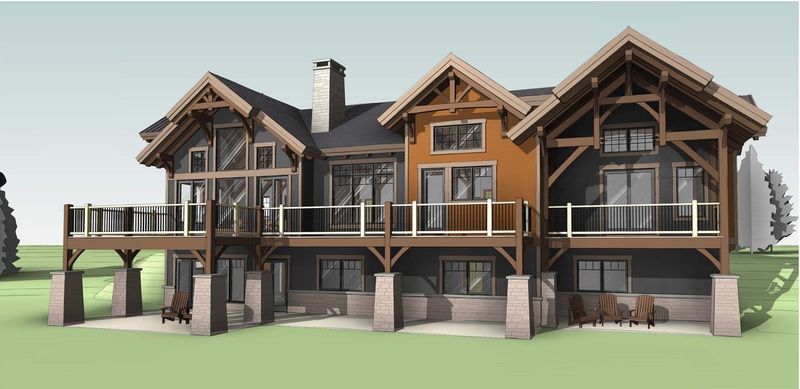Designing your Home for the Climate you are Building in
Designing for Specific Climates

Did you know that each specific climate warrants different design details than others? A home located in the Arizona desert calls for contrasting design characteristics from one located in the Rocky Mountains or one that is sited on the ocean’s coast. Below is a short list of distinctive design characteristics for each broad climate type that we typically find in North America.
Hot arid climates:
In hot arid zones, the main objective is to reduce uncomfortable conditions created by the extremes of heat and dryness. Usually in this climate there are great variations between day and night conditions. It is important to provide maximum shading of direct solar radiation during the day. Usually these conditions can be controlled easier with compact designs that incorporate shade and controllable ventilation.
Warm humid zones:
This climate is characterized by high rainfall and high humidity. The temperature differences are minimal and winds are typically light. The most important design considerations involve providing maximum ventilation by designing large openings. Also, providing maximum shading of direct solar radiation is important. Generous shading devices can assist with this. Vegetation can also be used to provide shade.
Temperate conditions:
A temperate climate typically includes a hot and dry season followed by a wet and warm season and then winter conditions. This makes it a challenging climate to design in. The goal is to keep a balance between conflicting requirements. In the winter, you need to seek solar radiation gain and then provide shading in the summer. Also, you need to provide wind protection in the winter and proper ventilation in the summer. Some of these requirements can be satisfied by providing semi-compact forms and an orientation to benefit from the winter sun.
Alpine zones:
The alpine climate is characterized by low humidity and high temperature ranges. There typically are cold winters, warm summers and highly variable spring and autumn conditions. Good access to sunlight is important, therefore maximizing southern exposure is key. Stretching a building out in the east/west direction helps with both sun exposure and essential ventilation which is imperative in the summer months.
This is just a preview of a few of the design challenges that you may encounter with these specific climate types. For my next few blogs, I will focus on each climate separately and discuss specifically what we can do to design buildings smarter and more environmentally friendly for the setting we each live in. Stay tuned….
